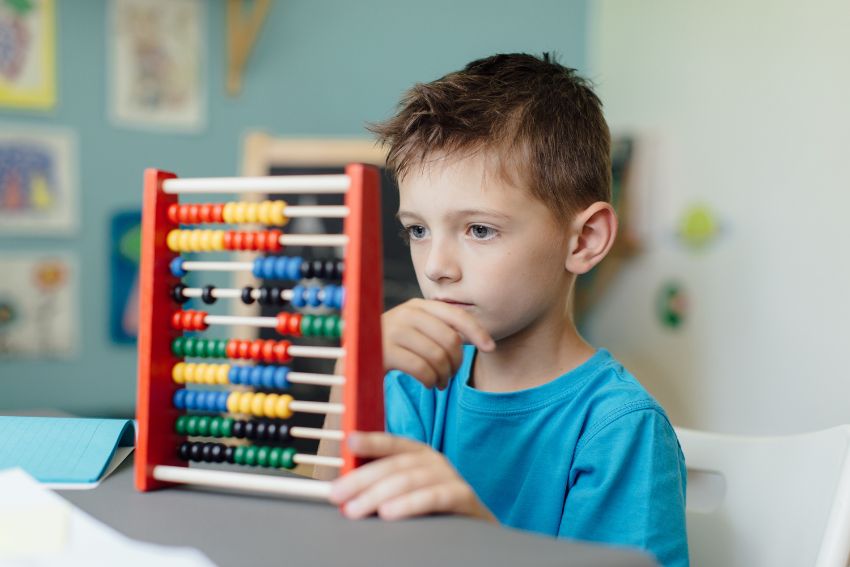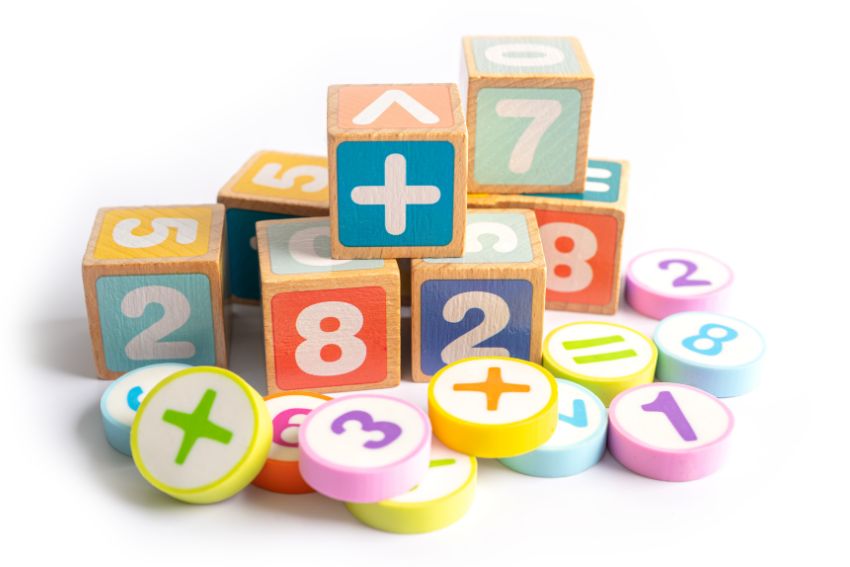What are square numbers? This is a common question from children and parents exploring maths together. A square number is the result of multiplying a whole number by itself. For example, 5 × 5 equals 25, so 25 is a square number. Think of it as arranging objects to form a perfect square—hence the name!
Square numbers play an important role in maths, helping children understand multiplication, patterns, and geometry. They pop up in many areas, from simple area calculations to more advanced topics students will encounter later.
In this blog, we’ll explain square numbers in a simple way and highlight why they matter. You’ll also find a list—including all the square numbers up to 100—to help your child practise and learn with ease.

Square Numbers Explained
Now that we’ve introduced what square numbers are, let’s explore them a little deeper. Understanding square number meaning becomes much easier when we visualise them.
Square numbers have some interesting characteristics. Firstly, they are always non-negative, as multiplying two positive or two negative numbers results in a positive product. Also, certain patterns appear in square numbers. For instance, they often end in digits like 0, 1, 4, 5, 6, or 9 when written out fully. Recognising these patterns makes it easier for children to recognise squares quickly.
List of Square Numbers 1 to 100
Now that we’ve explored what square numbers are and how they work, let’s focus on the actual numbers themselves. Learning the square numbers up to 100 is a great way to help children recognise patterns and improve their maths skills.
A complete square numbers list from 1² (1) to 10² (100) will make it easier for children to memorise square numbers and practise spotting them in maths problems.
Square Numbers 1 to 100
| Number | Square Number |
| 1 | 1 |
| 2 | 4 |
| 3 | 9 |
| 4 | 16 |
| 5 | 25 |
| 6 | 36 |
| 7 | 49 |
| 8 | 64 |
| 9 | 81 |
| 10 | 100 |
Patterns and Observations
When looking at square numbers, certain patterns become clear. One interesting observation is how the gaps between consecutive square numbers grow. For example:
- The difference between 1 (1²) and 4 (2²) is 3.
- The difference between 4 (2²) and 9 (3²) is 5.
- Between 9 (3²) and 16 (4²) is 7.
As you can see, the differences increase by 2 each time, forming a simple yet fascinating pattern. Recognising these trends helps children understand the logic behind square numbers and makes it easier for them to memorise the sequence.
In the next section, we’ll dive into cube numbers and see how they compare to squares.
What Are Square Numbers and How Do They Differ from Cube Numbers?
By now, we’ve explored square numbers, but how do they compare to cube numbers? Let’s break it down.
A cube number is the result of multiplying a whole number by itself twice more. In simple terms, it’s like this:
n × n × n.
For example:
- 2 × 2 × 2 = 8 (so 8 is a cube number)
- 3 × 3 × 3 = 27
- 4 × 4 × 4 = 64
Think of a cube number as building a 3D cube with blocks. If you have 3 blocks along each edge, you’d need 27 blocks in total to fill the entire cube—hence, 27 is a cube number.
While both square and cube numbers come from multiplying a number by itself, the key difference is in how many times the number is used in the multiplication. A square number is multiplied by itself once (n × n), while a cube number is multiplied by itself twice more (n × n × n).
Here’s a simple comparison:
- Square of 2 → 2 × 2 = 4
- Cube of 2 → 2 × 2 × 2 = 8
Cube numbers grow much faster than square numbers. For instance, while 4² is 16, 4³ jumps to 64! This makes cube numbers exciting to explore, especially when discussing volume and 3D shapes.
In the next section, we’ll explore how square and cube numbers are used in real life.
Practical Applications of Cube and Square Numbers
Now that we know what square numbers and cube numbers are, let’s explore how they are used in real life. These numbers pop up more often than you might think!
Square Numbers: Geometry and Area Calculations
One of the most common uses of squared numbers is in geometry. When calculating the area of a square, we multiply the length of one side by itself. For example, if each side of a square is 5 cm, the area is 5 × 5 = 25 cm². This is a simple but powerful useage that helps understanding shapes and spaces.
Cube numbers: Volume Calculations
Cube numbers come into play when we talk about volume. To find the volume of a cube, you multiply the length of one edge by itself twice more. For example, a cube with sides of 3 cm has a volume of 3 × 3 × 3 = 27 cm³. This is especially useful in subjects like design and architecture, where understanding 3D space is crucial.
Real-World Examples
Square and cube numbers are used in many everyday situations. Architects use square calculations when designing floor plans, while builders calculate materials using cube numbers to figure out how much space is needed. Even in games like Minecraft, players use square and cube concepts to build structures.
Understanding all square numbers and cube numbers isn’t just about passing maths tests—it helps kids make sense of the world around them.

Teaching Strategies and Overcoming Challenges in Square Number Calculations
Teaching square numbers can be both fun and effective with the right strategies, but it also comes with some challenges. Using visual aids like grids or dot patterns helps children understand what a square number is by allowing them to see how numbers form perfect squares. For example, arranging 9 dots into a 3×3 grid visually demonstrates that 9 is a square number (3 × 3).
Interactive activities further reinforce this concept. Games like “Square Number Bingo” or online multiplication challenges make learning engaging and memorable. Encouraging children to apply these ideas in real-life problem-solving—such as calculating the area of a square-shaped garden—helps them see the value of square numbers beyond the classroom.
However, students often face challenges, especially when it comes to square number calculations. A common misconception is confusing square numbers with cube numbers, which involves multiplying a number by itself twice more (e.g., 2 × 2 × 2 = 8). Clarifying this difference is essential to avoid confusion. Another challenge is calculation errors, such as forgetting to multiply the number by itself or miscalculating the product. To help, encourage double-checking work and practising multiplication facts regularly.
Combining engaging teaching methods with strategies to address these common challenges can make learning early years maths more enjoyable and effective for students.
Conclusion
Understanding square numbers and cube numbers is a crucial part of building strong maths skills. We’ve explored what square numbers are, how to recognise them, and their real-life applications—from calculating areas to spotting patterns in maths. We also discussed square number properties, how they differ from cube numbers, and how these concepts help children in geometry and problem-solving.
Encouraging children to explore more about square number calculations opens the door to advanced topics like algebra and geometry. With the right teaching strategies, they can master these concepts while having fun. If your child needs extra support, consider working with online early years maths tutors who can provide personalised guidance and make learning engaging.
Square numbers may seem simple at first, but they play a big role in helping children develop confidence and a deeper understanding of maths. Give your child the support they need today and help them unlock their full potential in maths and beyond.
FAQs
What are square numbers?
Square numbers are the result of multiplying a whole number by itself. For example, 4 × 4 = 16, so 16 is a square number. They are called “square” because they represent the area of a square with equal side lengths. They are used in geometry, algebra, and many real-life situations, such as calculating areas.
How to explain square numbers to kids?
Tell kids that a square number is what you get when you multiply a number by itself. For example, 3 × 3 = 9, so 9 is a square number. You can also use visual aids, like drawing dots or blocks in a square shape, to help them see the concept. For instance, arranging 4 dots in a 2×2 grid shows that 4 is a square number.
What are the first 6 squared numbers?
The first six squared numbers are:
1² = 1
2² = 4
3² = 9
4² = 16
5² = 25
6² = 36
What are the first 20 squared numbers?
Here’s a full list:
1² = 1
2² = 4
3² = 9
4² = 16
5² = 25
6² = 36
7² = 49
8² = 64
9² = 81
10² = 100
11² = 121
12² = 144
13² = 169
14² = 196
15² = 225
16² = 256
17² = 289
18² = 324
19² = 361
20² = 400
What is the sum of the 3rd and 5th square numbers?
The 3rd square number is 3² = 9 and the 5th square number is 5² = 25.
The sum of these two square numbers is:
9 + 25 = 34








